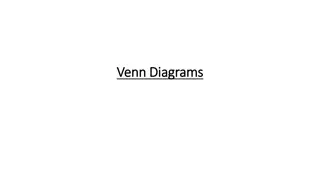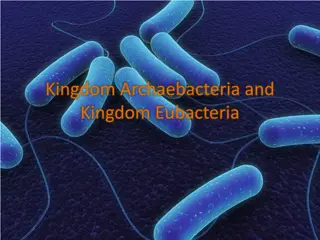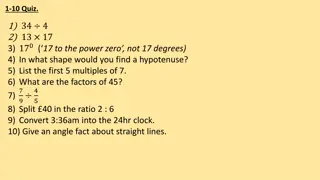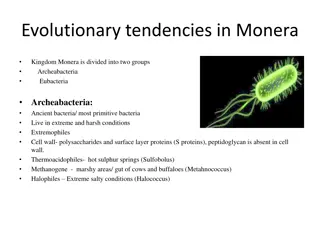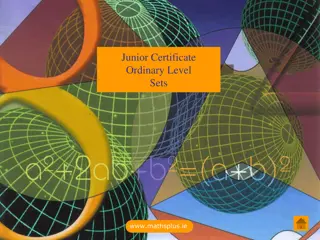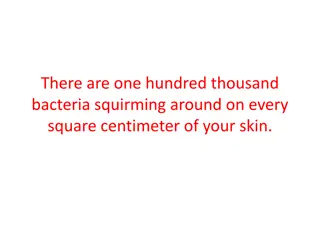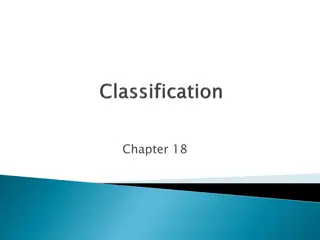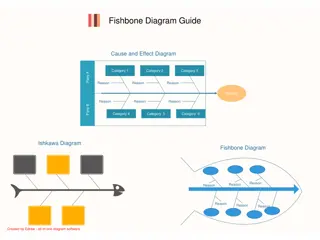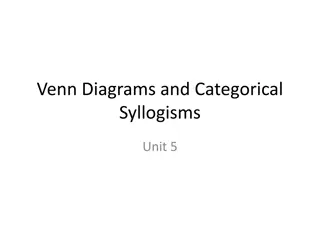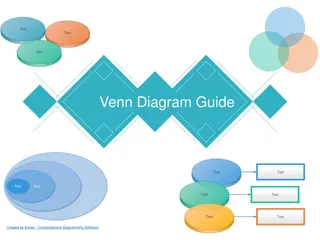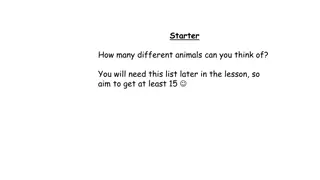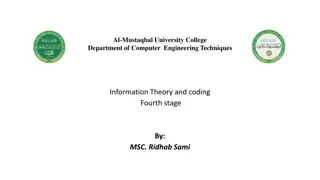Comparison of Archaebacteria & Eubacteria Venn Diagram
Archaebacteria and Eubacteria are two types of bacteria with distinct characteristics. Archaebacteria are ancient bacteria that are extremophiles, living in harsh environments like hydrothermal vents and volcanoes, lacking peptidoglycan. On the other hand, Eubacteria are true bacteria with peptidoglycan in their cell walls and cell membranes. This Venn diagram highlights the differences and similarities between the two bacterial types, categorizing features such as ancientness, extremophily, and cell wall composition.
Download Presentation

Please find below an Image/Link to download the presentation.
The content on the website is provided AS IS for your information and personal use only. It may not be sold, licensed, or shared on other websites without obtaining consent from the author.If you encounter any issues during the download, it is possible that the publisher has removed the file from their server.
You are allowed to download the files provided on this website for personal or commercial use, subject to the condition that they are used lawfully. All files are the property of their respective owners.
The content on the website is provided AS IS for your information and personal use only. It may not be sold, licensed, or shared on other websites without obtaining consent from the author.
E N D
Presentation Transcript
Create a Venn Diagram comparing Archaebacteria & Eubacteria True bacteria Ancient bacteria Extremophiles Do not have peptidoglycan Live in hydrothermal vents, volcanoes, the Dead Sea Have peptidoglycan Have a cell wall Have a cell membrane
What is gram staining? Procedure used to identify different microbes
Describe and draw the difference between a gram positive and gram negative bacteria.
Gram positive: Contain thick peptidoglycan in cell walls (stained purple) Gram negative: Does not contain peptidoglycan or very little (stain pink)
How do bacteria move (3 ways)? 1.Swim using flagella to propel 2.Tumble use flagella to tumble in one spot 3.Slime layer- ooze over the surface
How do we classify bacteria? Shape, gram stain response, Energy production, Kingdom, presence of certain structures
Why does every organism need an energy source and a carbon source? Because all organisms need energy for life processes and need Carbon to make organic compounds (lipids, proteins, carbs, N. acids).
List possible sources of energy & carbon. Energy Sunlight, inorganic chemicals (hydrothermal vents) & organic chemicals (organisms) Carbon CO2 & consuming other organisms
Compare a chemoheterotroph and a photoheterotroph.
Mode of Nutrition Photoheterotroph (ex: purple bacteria) Energy Source Light Carbon Source Organic compounds (carbs, fatty acids, alcohol) Organic compounds (organisms) Chemoheterotoph (most bacteria) Organic chemicals Ex: lipids, carbs from other organisms
Compare a chemoautotroph and a photoautotroph.
Explain the difference between obligate anaerobes, facultative anaerobes and obligate aerobes.
Obligate Aerobe Facultative Anaerobe Obligate Anaerobe -Does NOT need O2 Will die from exposure to O2 -Uses fermentation for respiration -Needs O2 for aerobic respiration -Will die without O2 -Can survive with or without O2 -Uses aerobic respiration or fermentation
How do bacteria reproduce? BINARY FISSION
Is binary fission sexual or asexual? ASEXUAL
Are the daughter cells different or identical? IDENTICAL
What has to occur before binary fission? DNA replication
What is an advantage of binary fission? Very fast.
Why is genetic recombination important? Pass on beneficial genes and allows for genetic variation
What are the 3 types of genetic recombination? Conjugation, Transduction & Transformation
Define and draw Transduction. Virus inserts DNA from other bacteria into a new bacteria.
Define and draw Transformation. DNA from surroundings inserted into bacteria (when other bacteria burst).
Define and draw Conjugation. 2 bacteria form a bridge to exchange DNA (plasmid).
Explain how bacteria develop resistance to drugs.
There are bacteria who are naturally resistant to drugs. These bacteria pass their DNA to non resistant bacteria. When the patient takes antibiotics, the resistant bacteria survive. These resistant bacteria multiply.
Helpful Uses of Bacteria? Produce wine, cheese and drugs/medicines Digestion Nitrogen fixation in soil Decompose dead material!! Bioremediation the use of organisms to remove pollutants from soil, air or water Oil spills Sewage facilities
What is a pathogen? Organism that causes disease (viruses or bacteria)
Bacteria harm us by causing illness usually by releasing toxic chemicals. Define endotoxin and exotoxin. Endotoxin- Released by bacteria Exotoxin- naturally found in the outer membrane of gram-negative bacteria
How do diseases spread? Through the air, contact, droplets (cough/sneeze), fomites (stay on objects)
How can we stop diseases from spreading? Disinfectants, sanitation, education & sterilization, vaccines
What do antibiotics treat? Bacterial infections only (not viruses).
Explain the difference between disinfectants and antibiotics.
Disinfectants- Chemical solutions that sterilize objects Antibiotics- Medications that block growth and reproduction of bacteria in humans by interrupting their necessary life processes
How do antibiotics target only bacterial cells and do not harm human cells? Target structures found only in bacteria
Identify each structure.
How do viruses invade cells? Capsid tricks host cell. Insert DNA into host DNA & have host cell reproduce virus DNA when host DNA is replicated
Why do we call viruses specific? Each virus has a specific type of cell or species that it infects.
Why are retroviruses unique? Retroviruses have RNA instead of DNA and copies their RNA in reverse (from RNA to DNA).
Why are bacteriophages unique? They are viruses that infect only bacteria.
Compare and contrast a lytic and lysogenic infection.
Lytic Virus ultimately causes the cell to burst Lysogenic Virus inserts DNA into host DNA to replicate.
How do viruses benefit human lives? Gene therapy , biocontrol (control pests), cancer treatments
Describe the 3 types of vaccines discussed in class.



